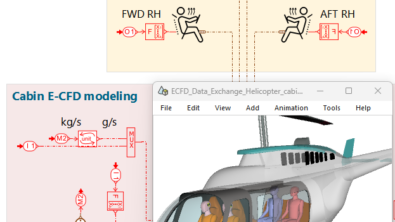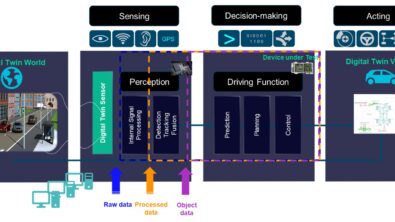HVAC systems – creating your comfort zone

It was a summer of extremes. We’ve suffered wildfires in Hawaii and Siberia, hailstorms in Germany and Italy, and flooding in central Europe, Turkey, and Libya. The amounts of extreme weather events are growing, affecting every corner of the world.
According to the World Meteorological Organization, summer 2023 was the hottest summer on record. The three-month period of June, July, and August 2023 was significantly warmer than any other three-month period on Earth.
How do you keep cool at over 40° Celsius (or 100° Fahrenheit)? Or warm when a freezing cold reality hits you? Can HVAC systems help boost creature comforts?

The Rise of EVs
It’s an irreversible trend: gas-powered internal combustion engines (ICE) in cars, trucks, and buses—even farm tractors—are being replaced by various combinations of battery-powered and hybrid engines. We’re very early in this replacement curve. Still, the forces of government (California’s ban on sales of new gas cars, SUVs, and light trucks by 2035, for example), industry, and consumer demand represent a collective effort to sunset gasoline’s dominance across all forms of transportation. We’re clearly decades away from pronouncing gas and diesel engines officially extinct—in the same way that sails, then steamships, were replaced by oil-powered vessels—but the day when everyone drives an EV is clearly coming sometime this century.
One of the biggest technical challenges to EV market adoption currently is the reality of range. The current EV vehicle range falls far short of what you expect from the average gas-powered vehicle. Unless you’re in a genuinely remote region and didn’t ignore the fuel gauge, you can confidently expect to find refueling options at a convenient distance. On the other side of the ledger is range anxiety, a genuine and well-researched impediment to EV adoption. Range anxiety is based on fear/concerns about running out of power and becoming stranded without a ready option to recharge the battery.
In this video, the Associated Press depicts the challenges of electric vehicle range in cold weather. Due to the extreme thermal environment, the electric school bus in the video turned out to be too costly. Simulating energy management can drive down costs, even in cold weather conditions. Siemens works with vehicle OEMs and battery suppliers worldwide to improve vehicle energy and thermal management of the battery packs and vehicles to improve range and passenger comfort while reducing overall cost.
Thermal Comfort in Electric Vehicles
EV range is affected by multiple factors, including topology. It’s also affected by our basic human desire to be as comfortable as possible—particularly when driving.
EV range is considerably impacted by a challenge that EV engineers are determinedly trying to solve: thermal cabin comfort. The heating, ventilation, and air conditioning (HVAC) challenges of ensuring that vehicle cabins are comfortably warm or refreshingly cool are entirely different for EV designers compared to their ICE peers. The differences are notable:
1. Weather extremes affect EV batteries
Chemical and physical reactions in EV batteries are affected by temperature. The rate of chemical reactions increases as temperatures rise. The higher the temperature, the faster the reactions and amount of energy produced. As the thermometer drops, the physical and chemical reactions in the EV battery slow, causing a reduction in the EV’s power. On extremely cold days, the battery draws to heat the interior, exceeding the energy required to move the bus along its route.
2. ICE naturally creates lots of heat
In the summer, heat produced by ICE is wasted. In the winter, it’s easily turned into cabin comfort.
3. EVs create little useable heat
The small amount of heat generated by EV engines is typically used to warm the battery. No extra “windfall” energy is available for cabin heating.
4. EV heating requires far more energy than AC
The battery draws to heat an EV cabin is much greater than the energy required to cool the cabin.
5. EV cabin comfort is a balancing act
Developing an energy-efficient HVAC system for an EV is an engineering challenge to balance multiple and—often conflicting—tradeoffs.
Energy-Efficient HVAC Systems in all driving conditions
Fortunately for most of us, we don’t live in the harsh reality of September-to-April winters. We, the masses, enjoy much warmer seasons throughout the calendar.
For companies trying to solve the EV cabin comfort challenge and drive the performance of energy-efficient HVAC systems forward, recent advances in the capability of the Siemens suite of simulation and analysis software are worth investigating.

Solving design questions
The tools have already delivered important time and cost-savings ROI, as well as solved myriad design questions:
Minimizing Energy Usage of HVAC System
Ensuring passenger comfort and maximal battery life requires much investigation. These tools enable engineers to dream and design without limits.
Evaluating Thermal Trade-offs
The right software tools reduce the time required to enable controls development and design trade-offs. While “faster than real-time” may sound somewhat of an engineering fantasy, this is the reality of engineers using the Siemens software suite today, using the advanced and automatic embedded CFD-to-1D coupling techniques. If you’re not among them, it’s worth your time learning to answer all your design and analysis questions while reducing computational complexity. For more info, read the blog post: Assess the thermal comfort in a city bus with a multi-zone modeling approach.
Enabling Innovation
The foundation of innovating is iterating. Analysis software like Simcenter STAR-CCM+ and Simcenter Amesim is helping companies progress by employing virtual testing to evaluate new and innovative hardware that can reduce driver and passenger comfort and energy consumption. These areas include heated seats, steering wheels, and cabin panels incorporating radiant heating.
********
If you want to learn more about how Siemens software impacts research into energy-efficient HVAC systems, we invite you to watch our recent on-demand webinar: Designing energy-efficient HVAC systems for improved passenger thermal comfort.


